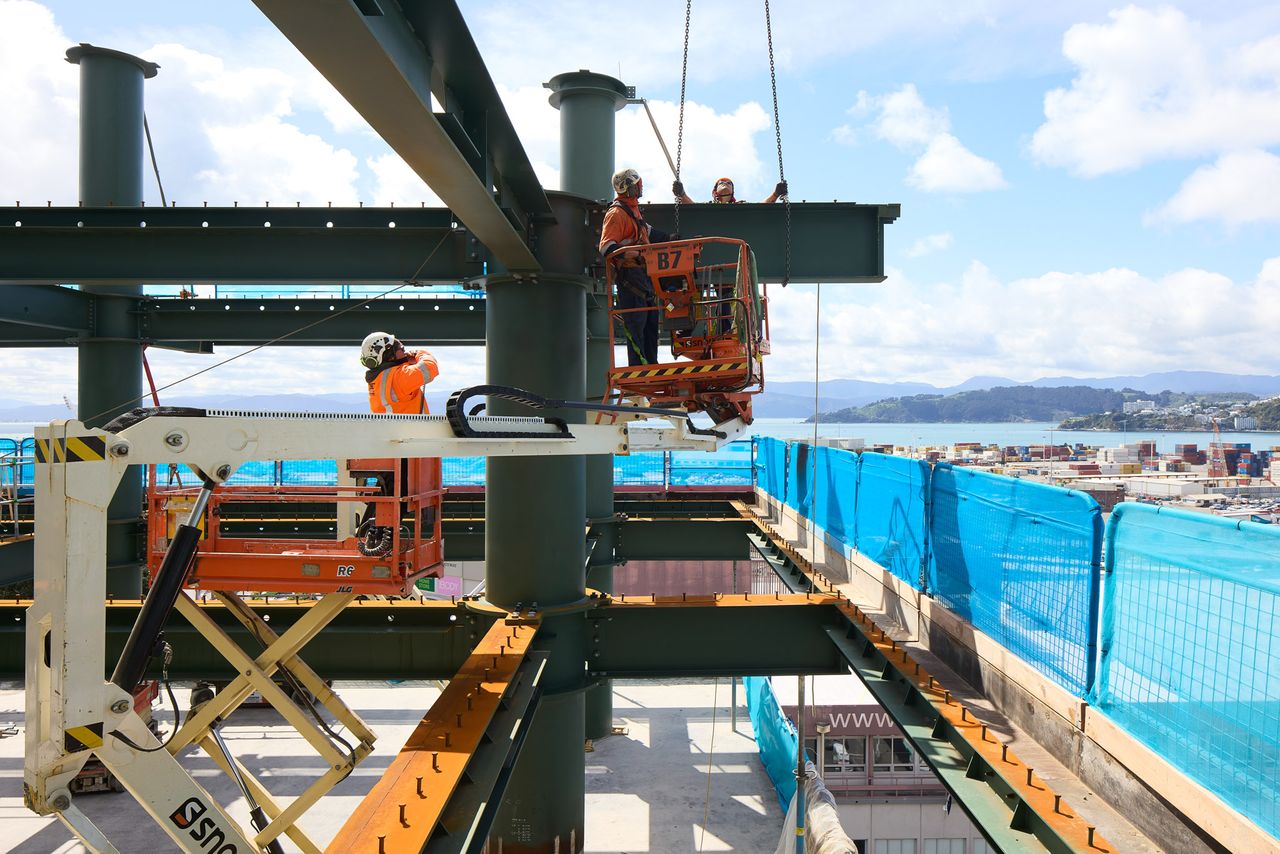News & Insights
Is BIM working for the Construction Market?

 Written by Jason Ward - Senior Design Manager
Written by Jason Ward - Senior Design Manager
In an industry where projects are increasingly complex, and the number of stakeholders is rapidly expanding, leveraging technology is essential for managing vast amounts of information and coordinating communication. Conceptually, Building Information Modelling (BIM) offers an ideal solution, with the potential to enhance project visualisation and improve communication and collaboration among stakeholders. However, BIM has yet to fully deliver on its promise, leaving the industry still searching for ways to enhance communication, efficiency, and productivity.
A short BIM history
BIM has been in use in Aotearoa for approximately two decades. Over that time, the BIM Acceleration Committee has conducted an annual survey (2013-2020) to track uptake and uncover obstacles. Usage has increased and is most dominant in the planning and design stages. During this time, we've also seen 3D (modelling), 4D (time/programme), 5D (cost/budgeting), 6D (sustainability) and 7D (facility management) introduced as additional dimensions to BIM.
While most projects successfully incorporate the 3rd Dimension, programming and costing have yet to be commonly used. Furthermore, very few projects in New Zealand incorporate sustainability and facility management in their BIM models.
By comparison, countries such as the UK are further ahead. In 2011, the UK government introduced an industry-wide BIM mandate for all government projects, increasing the adoption of BIM. The mandate demands higher levels of BIM over time, with contractors and service providers needing to upgrade from BIM Level 2 to BIM Level 3 by 2025 for publicly funded projects.
Many other European countries and Asian countries have followed suit with their own mandates. For instance, in Singapore, BIM submission is mandatory for certain building permit applications, particularly for larger and more complex projects. This reflects Singapore's commitment to leveraging BIM technology to improve the efficiency and accuracy of building design and construction processes.
Building from BIM
In New Zealand, BIM is used for pre-construction, but it's not translating into a useful tool for the tendering or construction phases. Consultants build the model, with a range of parties feeding into it. However, the model's level of detail, buildability and accuracy is often insufficient in the transfer between design and construction - despite the consultants' assurances that the model is fully coordinated.
It is essential for all parties, particularly the client, to understand where the discrepancies lie. One way to address this is to use the Level of Development (LOD) pertaining to BIM, which measures the degree of completeness and reliability of a model at various project stages.
LOD definitions help communicate the expected level of detail and accuracy for different components within a BIM model. While the exact definitions can vary, getting all parties' agreement on the LOD level before the project starts will ensure everyone is working towards the same expectations. Using a third party with credible expertise can assist the client through this process.
Moreover, without specialist advice and robust securitisation from project commencement, projects often incur a significant duplication of BIM-related work, leading to lost time and additional costs. Additionally, as the project progresses, the gap between the BIM model and the final design drawings widens, thus reducing opportunities for robust coordination between parties, particularly with building and fire services. The solution lies in elevating the BIM model to enable contractors to build directly from it, unlocking numerous opportunities for collaboration, communication, and efficiency.
A BIM model for cost and scheduling
Through my research, I've been liaising with consultants, contractors, programme managers, project managers and quantity surveyors to further understand a range of perspectives for BIM.
From the Programme Manager's perspective, a 4D BIM model could offer the detailed information needed for programming, thereby adding significant value and efficiency. Incorporating the fifth dimension of cost would enable quantity surveyors to extract greater value from the model by providing more accurate and detailed costing information. With a more precise design, there would be fewer changes during the construction phase, ensuring the initial costing remains accurate. Although 4D and 5D BIM have been available for some time, they are yet to be implemented successfully in New Zealand.
More time upfront
As I've discussed in previous articles, investing more time and budget into the design phase of construction projects pays dividends in the long run. This applies equally to investing in the BIM model and is one of the reasons RCP has increased its service offering to include greater expertise in reviewing the BIM model.
If the BIM model is completed to the correct level of accuracy, detail and coordination, issues can be identified and fixed while it's still relatively inexpensive to correct them.
However, the solution is more complex than simply providing a better initial model. The construction ecosystem does not support this approach. Many consultants are concerned that if they model something incorrectly, the contractor will respond with a variation at their expense. Therefore, there is a disincentive to include this level of accuracy and no reward for taking this risk.
This is when relationships, trust, and communication come into their own. Improved clarity and discussion between the consultants, main contractor, project manager, and client will help each party play its part and share risk appropriately.
No holding back
We need to be more committed, as using BIM half-heartedly will not provide the results we are looking for. A detailed design should be provided at the LOD 300 level, showing how the building comes together (LOD 350 for complicated / confined areas), notwithstanding buildability input.
It's also paramount that a QA assessment of the 3D BIM model and the 2D drawing packages is undertaken at each design stage. Although this can be both difficult and time-consuming, it is critical to project success. If not, clients may receive less than promised without realising it. This is compounded if consultants anticipate that contractors may create their own 2D interpretations of the drawings, reducing the value of a highly detailed model in the first place, hence the purpose of closing this design and construction loop.
Summary
A culture shift is needed within the construction environment to enable accurate and detailed modelling, with clear communication and trust among all parties.
To truly benefit from this technology, the construction industry must commit to comprehensive BIM practices, ensure robust QA processes, and foster collaboration among consultants, contractors, and clients. Only then can BIM deliver its full promise of efficiency and coordination in construction projects.


